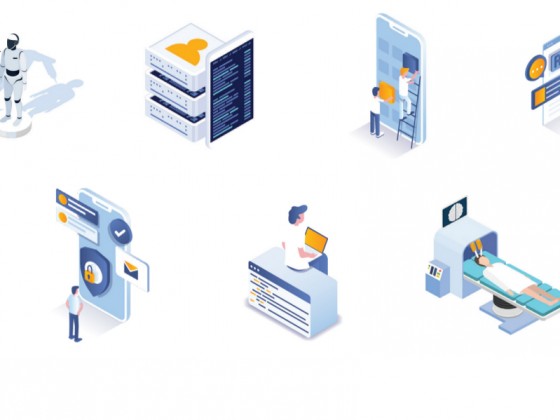
Prior to joining Lux, Shriram founded his own company to develop and commercialise IoT/wearable products to address needs in the healthcare sector. He also has held positions at Cornell University, United Technologies, and Evonik.
Shriram holds a Ph.D. from the University of Minnesota.
The Many Facets of Workforce Throughout the Years
2020 was the year when the discussion on the Future of Work came to the forefront because of COVID19. However, the idea of work has been undergoing a transition for more than two centuries with the industrial revolution ushering in Workforce 1.0.
As mechanisation and automation gained traction, labourers who had traditionally depended on artisan skills for centuries were forced to rapidly learn mechanical skills, and with economies of scale, efficiency and time management became critical drivers amongst the workforce.
With advances in electronics and computers in the 1970s, industrial automation saw an uptick as we entered the era of Workforce 2.0 in which large parts of work moved from the factory floor to the back office which became the center of activity for most organisations.
The widespread adoption of the Internet in the late 1990s unleashed Workforce 3.0 – the era of remote working. Statistics indicate that, between 2005 and 2018, remote work in the US grew by nearly 173%. Most recent data collected by the US Census Bureau and the Bureau of Labor Statistics showed that, just before the novel coronavirus hit the world, around 4% to 5% of the US workforce was already working remotely. As the pandemic hit the world, this trend accelerated. A Gartner survey found that 88% of all business organisations all over the world encouraged employees to work from home as COVID19 spread. Another Gallup poll found that, in March 2020, the percentage of US-based workers who said their employers were offering remote work options increased from 39% to 57%.
When Flexibility and Agility Become the Name of the Game
The pandemic has led to an increased preference amongst employees towards flexible and remote working arrangements. However, there are other underlying longterm demographic and economic trends that promise to – or rather make it imperative that we actively – transform the future of work. For example, developed nations such as Japan and the US are simultaneously facing the twin problem of declining birth rates and an aging workforce (see “Digital Transformation of Oil and Gas”) meaning that these countries will likely see labour shortage in the next decade or so which will threaten GDP growth. This labour shortage will be particularly intense for the manufacturing sector in view of the frequent service that aging industrial assets will require, all at a time when the younger generation is leaning towards jobs in information technology or the sharing economy.
This confluence of megatrends will unleash an era of Workforce 4.0 – an era where intelligent machines, driven by emerging technologies like artificial intelligence, and augmented reality, will work alongside humans, augmenting some tasks and automating others. This transformation to Workforce 4.0, which has already begun, is occurring along four major dimensions:

- Enabling a productive remote workforce
As workers extensively use tools like Zoom and Slack amid COVID19, they became comfortable with technology. Nevertheless, background noise and poor audio quality continue to interfere with productivity. Next generation tools like Krisp, which uses deep neural networks (DNNs) to enable noise cancellation, and Google Duo, an online audio/video conferencing tool that uses generative networks to improve audio quality, promise to alleviate these challenges. AI applications like those from Otter (formerly AISense, which has partnered with Zoom) and Reason8 are helping by automatically taking meeting notes and recording meeting minutes. When it comes to team activities such as brainstorming and workshopping – a primary reason for the existence of office environments – digital tools like Axis Workshops, which allows several dozen workshop participants to engage with each other in real time using their devices, and Mural and Stormboard, which allow team members to whiteboard with digital sticky notes in real time are coming to the rescue. These tools will not help with tasks such as marketing and sales which depend heavily on emotional input and face-to-face interaction. While such jobs and tasks are not likely to become completely remote for a long time, emerging innovations are starting to make a mark. For example, companies like Beyond Verbal and Emotibot Technologies are using AI to analyse vocal intonations to determine the emotions of a meeting participant, a tool that could be very useful for sales personnel as they transition to phone meetings with prospects rather than face-to-face meetings. - Monitoring and training the workforce
As many employees operate remotely during the pandemic, monitoring and training employees and managing projects become a critical need. Tools like Trello and Asana assist managers with creating and assigning tasks and tracking them just as they are completed. Time management apps like Timely (offered by Memory) automatically track time spent on various apps – documents, meetings, emails, and web sites. For project managers, Forecast offers a project management software with Auto Schedule – an AIenabled feature that automatically estimates tasks, assigns and optimises workload across resources, and sets a project delivery date. Solutions like FortressIQ which use computer vision and natural language processing to record and interpret a user’s screen and document processes aid work training and process improvement. Even before the pandemic, monitoring and training workers had been a challenge for on-site workers as well, especially as skilled labour continues to erode. The pandemic brought on a sense of urgency around this issue especially as companies struggled to keep their operations going while ensuring that their workers remained safe from COVID19. AI is being used to analyse data collected via cameras, Wi-Fi and Bluetooth beacons, and wearable devices, and determine if workers are social-distancing or are at risk of infection. These technologies, while not new, are only now finding traction. As workers become comfortable with these technologies, they could also be applied towards monitoring workers. Companies like Re’flekt and Light Guide Systems offer augmented reality (AR) technologies that aid in training and guiding new workers in their tasks.
Monitoring and training workers had been a challenge for on-site workers as well, especially as skilled labour continues to erode. The pandemic brought on a sense of urgency around this issue especially as companies struggled to keep their operations going while ensuring that their workers remained safe from COVID19.
- Upskilling the workforce
Upskilling has seen the greatest technology-enabled transformation in the recent years. Natural language processing (NLP), which can derive insights out of large amounts of text data, is rapidly reaching human performance in a variety of pattern recognition tasks. Many organisations have invested in NLP-driven comprehensive knowledge management systems, such as that offered by Sinequa, that analyse market trends, make company information readily accessible to employees, allow for review of lengthy contracts and patents, and enable seamless collaboration among employees – a boon in this era of social distancing. On the field, digital twins and IoT sensors are providing workers with rapid and real-time access to operational data while natural language generation (NLG) technologies, such as that offered by Arria NLG, are helping convert operational data to narrative insights and reports. Companies like Augmentir are using NLP to digest checklists and other media related to field work and share insights with frontline workers, analyse steps where workers are facing challenges, and enable workers to enter annotations and feedback on the field in a seamless fashion. Augmented Reality (AR) technologies from companies like Fieldbit, Re’flekt, Scope AR, and Ubimax allow semi-skilled field workers to obtain guidance from skilled technicians in the back office as well as document their work in real-time. While AR has demonstrated efficiency improvements of 25% to 50% in multiple use cases, there are still challenges to consider, including poor connectivity in remote locations, poor performance in noisy factory settings, as well as limited scalability thus posing barriers to adoption. - Automating the workforce
While complete automation of the workforce and lights-out manufacturing are still decades away, examples of automation of tasks that require higher levels of intelligence are already starting to appear, thanks to emerging technologies such as AI, robotics, and drones. For example, traditionally, designing new materials and products has involved many months of manual labour. However, emerging technologies such as materials informatics and ingredient informatics are enabling companies to design new materials, nutritional ingredients, and food and beverage products within weeks. Likewise, generative design is allowing companies to optimise product design within a fraction of time that designers have traditionally needed and Robotic Process Automation (RPA) tools from companies like FortressIQ and UiPath are increasingly automating away many of the back-office tasks and processes. Drones and robots are finding traction in three types of tasks – tasks that require high throughput and are well-defined (such as in microfulfillment centers), tasks that are manually intensive and hard to complete (such as inspecting pipes and storage tanks), and tasks that pose a safety risk to workers (such as inspecting infrastructure in remote areas). Nevertheless, compared to informatics, drones and robots will likely experience slower traction as they are not scalable in all tasks which in turn poses a roadblock to complete automation. Automation is also finding its way into product development. For example, companies like Emerald Cloud Lab and Strateos offer ready-to-go cloud robotic labs that innovation can tap into to aid their chemistry and biology experiments.
- Sharing the workforce
For nearly a century, talent and skill have been one of the main competitive barriers for organisations. However, as these skills become embedded in technology platforms that can upskill workers and enhance their efficiency, and as demographic changes erode the skilled workforce, businesses will increasingly depend on a shared workforce of semi-skilled and skilled workers rather than spending resources on retaining talent. Companies like TaskRabbit and Upwork have already Uberised the handy person and the consulting/software workforce. Coresystems is offering an Ubertype crowd-servicing platform for manufacturing companies. While still in early stages, megatrends will ensure that this transition eventually happens.
To summarise, while complete worker automation may be decades away, worker augmentation and upskilling is not that far of considering that emerging technologies such as AI, AR, and NLP that are enabling this transition have reached a tipping point. The ripple of this workforce transformation goes beyond just the employee and the employer; it has implications for where people will live, what they will do with their time, what clothes and technologies they will buy, and what type of education they will value. The time to invest in and understand the implications of Workforce 4.0 is now.









